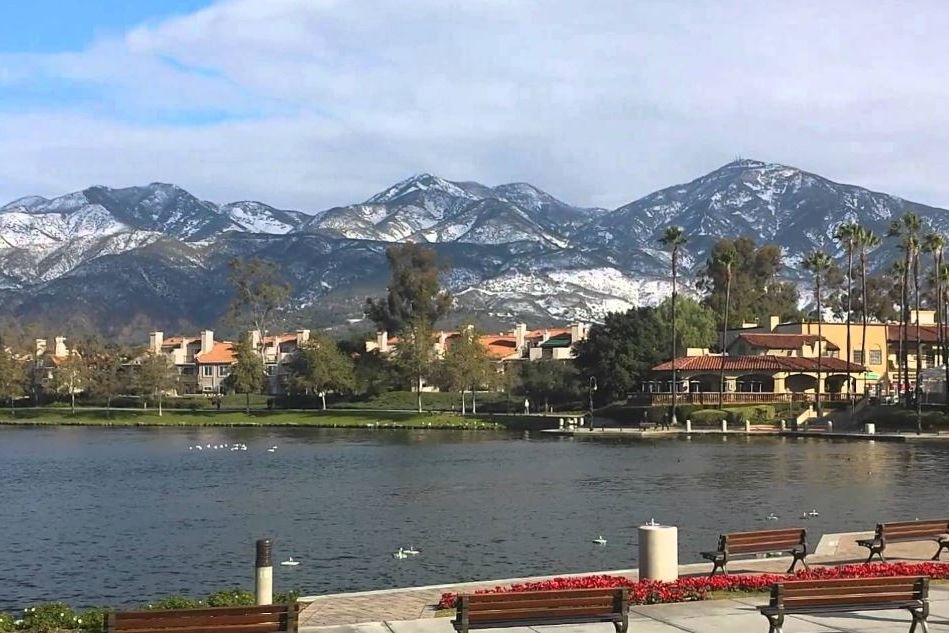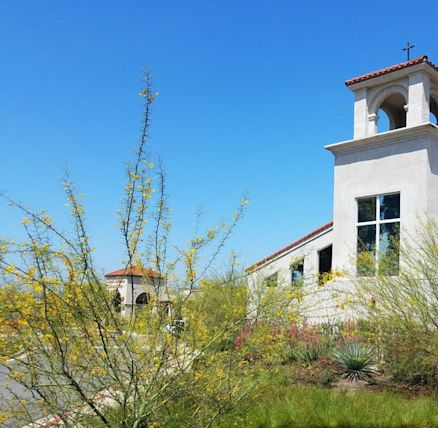



I have a variety of flowering annuals and perennials in a bed that receives half-day sun slightly wilted petunias guide me as to when watering is necessary. The longer we can go without watering, the deeper the roots of our plants will grow.

Especially now that hot weather is just around the corner, we want to minimize irrigation frequency so that our plants acclimate to our soil as it becomes increasingly dry.
RANCHO SANTA MARGARITA WEATHER YAHOO TRIAL
Through trial and error, we can identify our own indicator plants as far as watering is concerned. Clover (Trifolium repens) is a sign of a nitrogen deficient soil (or lawn) while two weed species – chickweed (Stellaria media) and lamb’s quarters (Chenopodium album) – indicate a soil that is nitrogen-rich. Dandelions and spotted spurge (Euphorbia maculata) thrive in compacted soil so where you see them you know that soil improvement is necessary, while wild mustard grows in sandy soil and is an indicator of a good area for planting California natives. Indicator plants serve a variety of purposes. Even in a garden, following a freeze, plants in low spots may display frostbitten, blackened leaves while plants only a foot or two away, but at a slightly higher elevation, may be fine. After a frosty night, plants at the base of a slope may show cold damage while plants growing upon that same slope remain healthy. Second, even in areas with occasional frosts, planting on slopes is still an option where frost-sensitive plants are concerned since frost, like water, rolls downhill and settles there. Avocado trees are plagued by Phytophthora root rot where soil drainage is impaired which explains why large acreages of them, whether in Santa Paula or in Temecula and Fallbrook, are grown on steep slopes. First, both plants require excellent soil drainage. Interestingly enough, laurel sumac, like avocado trees, grows especially well on slopes. You can view laurel sumac growing all along Sepulveda Boulevard between Sherman Oaks and West Los Angeles. Early growers of orange trees in Southern California would also select sites for planting orange trees, which are also frost sensitive, based on laurel sumac’s presence. Since laurel sumac is frost sensitive, you can assume that frost is not an issue where it grows, an important factor in deciding where to plant avocado trees, since they are frost sensitive, too. In other words, wherever you see laurel sumac growing, you can plant avocado trees with confidence that they will thrive in that environment. Years ago, I learned that laurel sumac, a California native, is an indicator plant where avocado trees are concerned. It’s also possible, of course, that a volunteer seedling results when the wind blows a seed from a nearby tree into the garden. The stomach acid of these animals assists in dissolving some of a seed’s protective covering, known as the seed coat, creating an aperture wide enough to allow a radicle or baby root from the plant’s embryo to poke through, followed by the emergence of the first leaf, after the excreted seed has been hydrated as the result or rain or irrigation. Such seedlings, known as volunteers, generally sprout from seeds that have been consumed and then passed through the gut of birds or other animals before being excreted. I have frequently seen volunteer seedlings of Mexican fan palm, Shamel ash, mulberry, Brazilian pepper, and fig trees in my neighborhood, but never a laurel sumac. Just the other day, at the base of the trunk of my neighbor’s eucalyptus tree, I spotted a laurel sumac (Malosma laurina) seedling that had only recently sprouted.


 0 kommentar(er)
0 kommentar(er)
